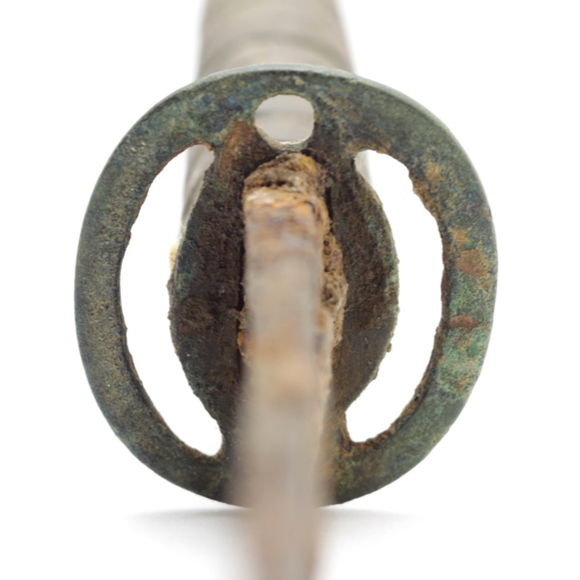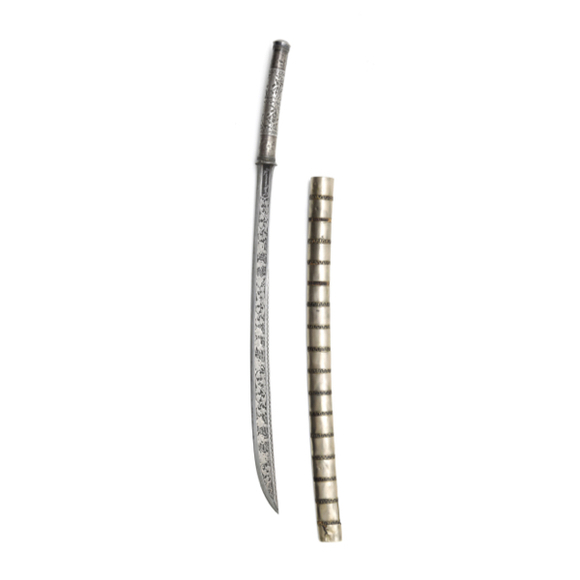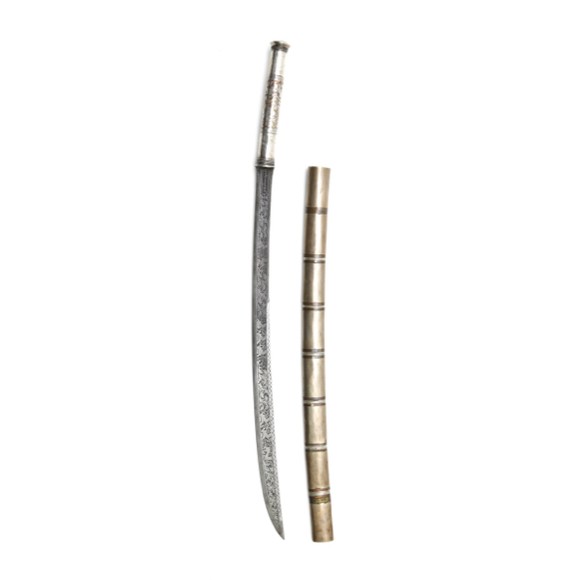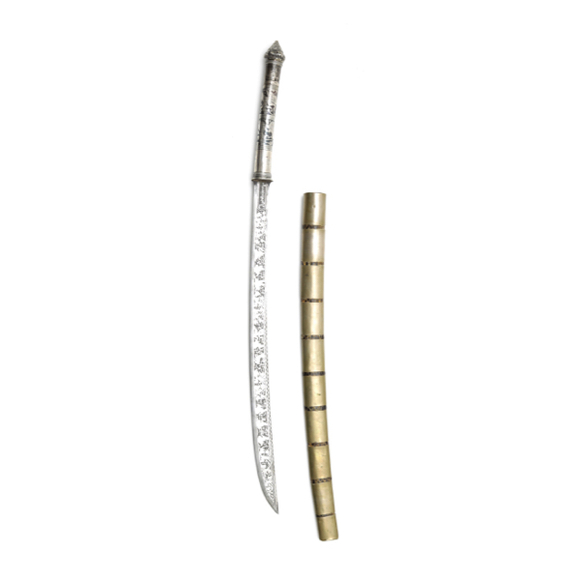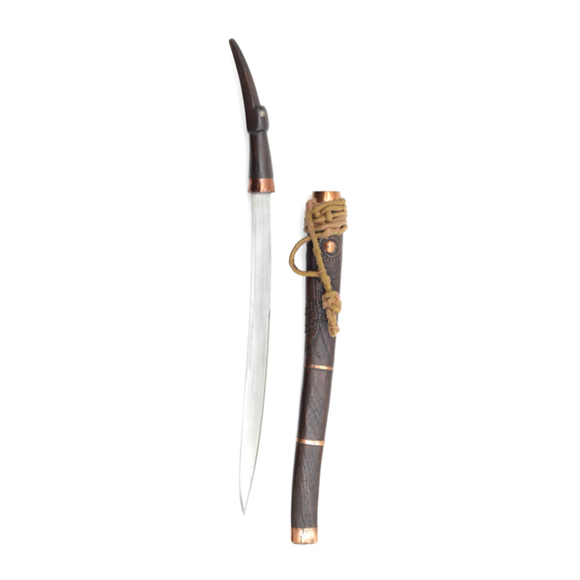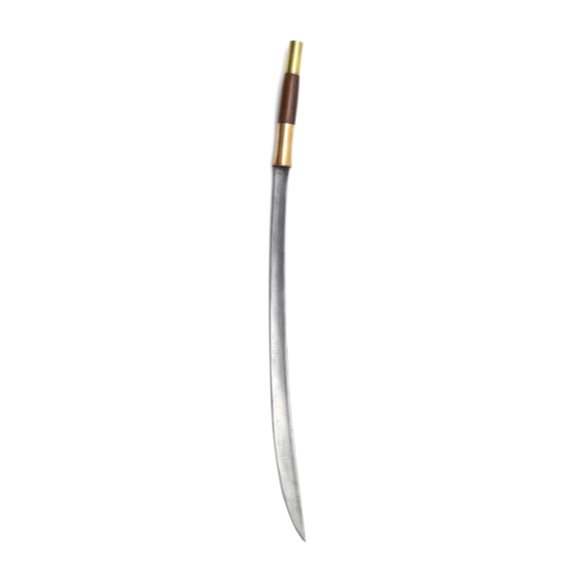In excavated condition, with copper alloy hilt.

Sheathed 87.3 cm
Sword 85.2 cm
56.3 cm
Base 10 mm
Middle 4 mm
5cm from tip 3 mm
Narrowest at base 26 mm
Widest near tip 32 mm
Sheathed 708 grams
Sword 480 grams
13.5 cm from hilt
Steel, wood, bamboo, rattan, brass
Of Shan manufacture,
Burma or Yunnan
European antique market
Introduction
Plain dha such as these are seen worn in Yunnan, Burma, and northern Thailand. Devoid of any decorative features, they can be hard to pinpoint. I think they were most likely produced by the Shan people and traded widely in the region. One of the hallmarks of Shan work is that the blades are relatively light and thin compared to Burman work, something often seen on this type of sword.
Bell, writing in 1907, describes a certain "mainsa dha" which by then was mostly produced in China.1 With China, he undoubtedly meant the Husa Valley in Yunnan, which was a known production center of good dha.
“During the latter part of our stay, one of the police escort, during a chaffing argument with a Kakhyen visitor, was without warning felled by a blow of the dah.
The savage decamped to the jungle, leaving the sepoy bleeding from a gash on his head, and another on the arm, with which he had warded off the blow and so saved his skull from being split. These dahs are made by the Shans of the Hotha valley, who are the itinerant smiths of the country.” 2
-John Andersen, 1876
Notes to introduction
1. E.N. Bell; A Monograph on Iron and Steel Work in Burma. Rangoon, Superintendent, Government Printing Burma, 1907.
2. John Andersen; Mandalay to Momien: A narrative of the two expeditions to western China of 1868 and 1875, under Colonel Edward B. Sladen and Colonel Horace Browne. Macmillan, London, 1876. Page 134.

Wearers of these plain dha. Left, a Kachin man.
Right, northern Thai hill tribespeople.
This example
A typical example with a graceful blade shape. It has a moderate curve and a gentle widening towards the tip. The spine is ridged and there is a long back bevel near the tip.
The bamboo hilt is wrapped with rings of braided rattan. The two halves of the wooden scabbard are held together with a series of rattan braided bands, elegantly spaced and going from narrow to wider towards the scabbard's tip.
Unusual for this type, it has a brass washer at the pommel and brass chape on the scabbard.
In original condition, with no restorations or repairs. Some corrosion on the blade; see photos.

















Fine silver overlaid dha made in Mindan village, south of Mandalay, gained fame in the 19th…

